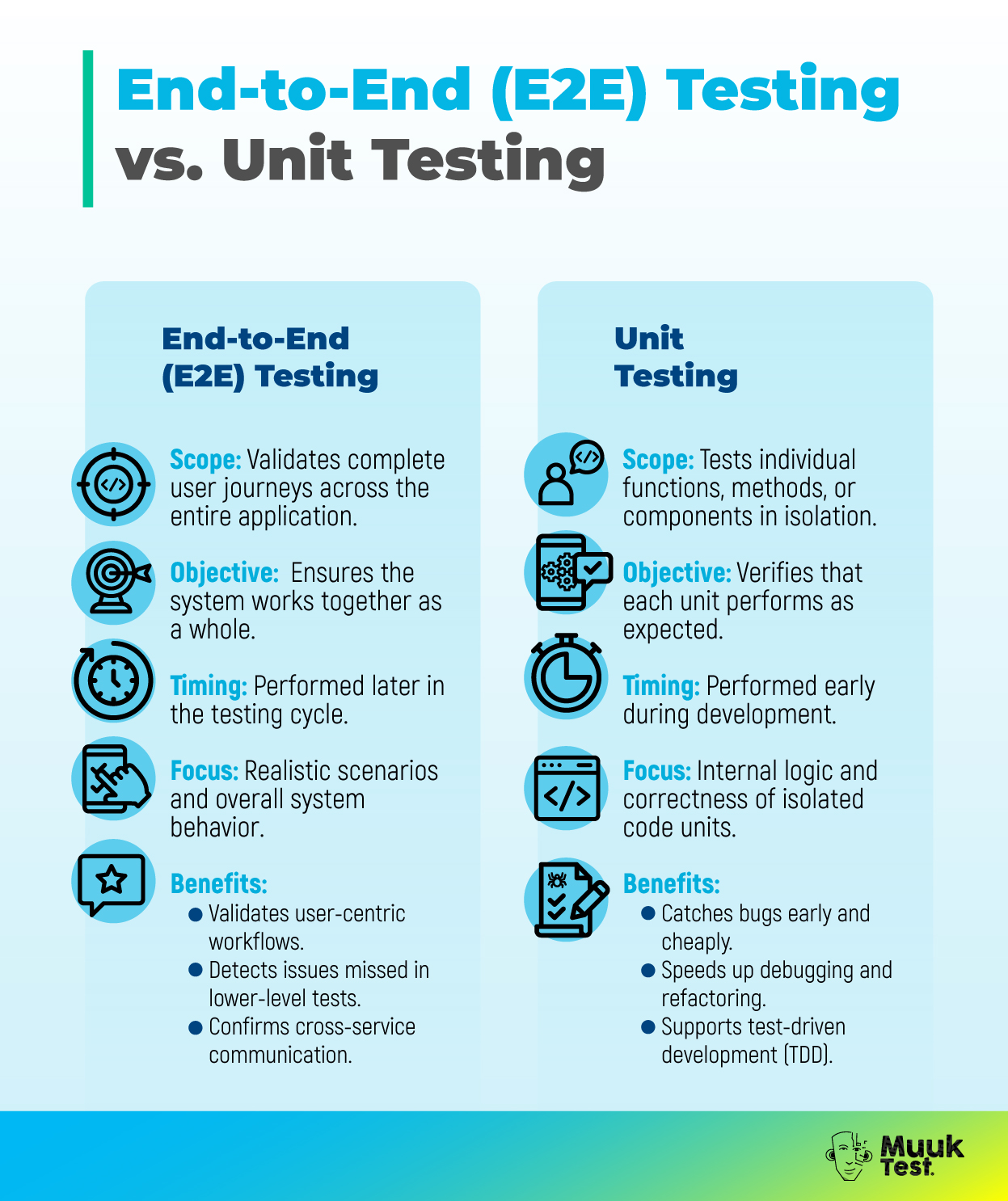- QA is critical, but most startups struggle: Relying on developers for testing leads to missed bugs, lost velocity, and burnout. Poor QA costs reputation, revenue, and growth.
- Hiring a full QA team isn’t always realistic: It’s expensive and time-consuming, especially for early-stage companies.
- You can fix QA without hiring by automating repetitive tests, building a strong testing culture, leveraging expert-led QA-as-a-Service like MuukTest, and integrating QA into your CI/CD pipeline.

You’re moving fast. Your product roadmap is ambitious. But every sprint seems to end the same way: missed launch deadlines, customers reporting bugs hours after release, developers spending late nights testing instead of building, and QA debt piling up like technical debt. And your team is feeling the pressure.
Sound familiar?
You’re not alone. Even major tech companies have faced costly QA oversights. Think back to the infamous Facebook outage in 2021 that took down services worldwide due to an error missed in testing. For startups, the stakes might not be as global, but a buggy release can be just as devastating for growth and user trust.
In July 2024, Microsoft systems went down globally, disrupting airports and causing chaos for travelers as critical infrastructure failed due to a software update issue that slipped through testing.
For startups, the stakes might not be as global, but a buggy release can be just as devastating for growth and user trust.
If you’re an early-stage SMB tech company, you already know how critical Quality Assurance (QA) is. But hiring and managing a full QA team? That’s expensive, time-consuming, and simply not feasible right now.
Here’s the good news: you don’t need to hire a bunch of Software Development Engineers in Test (SDETs) to fix your QA.
With the right approach and tools, you can achieve robust, expert-led QA coverage that scales with your growth,and avoid the costly mistakes that sink so many startups.
Why Your Current QA Process Isn’t Working
In many startups, QA ends up becoming “everyone’s job.” Developers test their own code. Product managers manually check features between meetings. Customer-facing teams field bug complaints and try to triage issues. Some teams rely on peer reviews, bug bashes, and even rotating testing responsibilities across the team. While this approach builds awareness of the product, it often leads to fatigue and inconsistent coverage.
Others report that without dedicated QA, developers sometimes cut corners on testing, assuming someone else will catch mistakes. Conversely, some organizations found that when developers owned quality fully, they developed better habits and created more robust automated test suites. But this only works in highly disciplined teams moving at a modest pace.
This might keep the lights on for a while, but it creates serious risks:
- Confirmation bias: Developers are too close to their own code to catch edge cases.
- Lost velocity: Every hour spent testing is an hour not spent shipping features.
- Developer Burnout: Teams get stuck in reactive mode, fixing bugs instead of innovating.
- Gaps in coverage: Especially for complex user journeys and edge cases.
- Tech debt: Due to patches and bandaids to meet release deadlines
It’s not just frustrating, it’s risky. Poor QA can derail your launches, hurt your reputation, and cost you customers.
If the above points are taken into account you can then say that you are providing a product that reaches a wider audience, increases the usability, satisfies current and future legal requirements and ethics, and finally improves the maintainability and efficiency of your product leaving it perceivable, operable, understandable, and robust.
Why QA Is Crucial for Startups
Many startups underestimate the importance of QA early on, focusing solely on shipping features to attract users or investors. But early detection of critical flaws can save significant costs, prevent customer churn, and even determine whether a startup survives. Having at least a lightweight QA process and an owner—even if it’s not a dedicated role—can make a massive difference.
Investing in QA doesn’t always mean hiring an entire team. Even simple processes like defining test cases, automating repetitive tests, and involving developers in accountability can help avoid these pitfalls.
According to one of our core partners, AllStacks, 38% of software doesn’t even meet core functional expectations, and that’s before accounting for bugs and defects.
How to Improve Your QA Process Without Hiring a QA Team
What if you could enjoy the coverage, confidence, and accountability of an in-house QA team, minus the hiring challenges and sky-high costs? That’s precisely what MuukTest offers. But even if you’re not ready to make that move today, here are practical steps you can take right now to improve your QA process:
1. Automate Where It Counts
Manual testing doesn’t scale. Identify repetitive tests and automate them to free up your team and ensure consistency.
For a deeper dive, read How to Measure the Business Value of Test Automation to see how automation impacts quality, cost, and team efficiency.
Many high-performing teams adopt unit tests, integration tests, and end-to-end pipelines to catch regressions early.
2. Build a Strong Testing Culture
When developers fully own quality, it creates accountability and drives better practices. However, this requires discipline and robust test automation. Pairing this with lightweight external QA support can help fill gaps without slowing the team.
3. Leverage Expert-Led QA as a Service
Instead of hiring, training, and managing a full QA team, work with a partner like MuukTest’s AI-powered QA automation services.
MuukTest offers AI-powered, expert-led QA coverage that adapts to your workflow, with flexible pricing plans designed for startups and growing teams:
- 95% test coverage in 3 months—fully managed
- AI + QA experts design, automate & run tests at record speed
- Run hundreds of tests in parallel for lightning-fast feedback
- Fraction of the cost of hiring qa engineers
- Zero vendor lock-in (you own all tests)
It’s like having a world-class QA team embedded in your process — without adding headcount.
4. Integrate QA Into Your CI/CD Pipeline
Don’t let QA be an afterthought. Embed it into your deployment process for faster, safer releases. Many teams also use monitoring tools and error detection systems post-deployment to ensure production stability.
Will This Hurt Developer Accountability?
Some founders hesitate to bring in QA support, fearing it might let developers off the hook for quality. But the best teams strike a balance: they maintain a strong culture of developer-owned testing while leveraging QA partners to establish the test strategy, automate the testing infrastructure, and catch what internal teams miss.
On rare occasions, removing QA entirely led to higher quality because developers were forced to take testing seriously. Other organizations discovered that hybrid setups worked best: developers owned the more straightforward unit and integration tests while QA provided exploratory testing and edge case coverage.
MuukTest reinforces developer accountability while providing an expert safety net, so you ship faster and smarter.
Why High-Growth Tech Companies Are Switching to MuukTest
- Up to 6x the speed to get to full test coverage
- 50% faster release cycles on average
- Up to 80% fewer customer-reported bugs
- 100% focus on building, not babysitting QA
With MuukTest’s blend of AI empowerment and human expertise, your team can deliver better software, faster — and with confidence.

Don’t Wait for Customer Pain to Make QA a Priority
Your team deserves to focus on building, not battling bugs.
No hiring. No training. No more QA headaches.
Book a QA strategy session today and discover how MuukTest can transform your QA process.
Frequently Asked Questions
How can startups improve QA without hiring a whole team?
Many startups automate repetitive tests, integrate QA into CI/CD, and work with expert-led QA services like MuukTest instead of hiring in-house teams.
Is it risky to rely on developers for QA in early-stage startups?
Yes. Developer-led QA often leads to missed bugs, confirmation bias, and burnout. A balanced strategy with automation and external QA support is safer.
What are the benefits of QA as a Service for small tech teams?
QA-as-a-Service offers fast, scalable test coverage without adding headcount, saving time, money, and helping teams release with confidence.
Can you automate QA without a dedicated QA team?
Absolutely. Startups can automate unit, integration, and end-to-end tests using tools and platforms like MuukTest to achieve high-quality releases.
Why is QA critical for startup success and growth?
QA helps catch critical issues early, reduces customer-reported bugs, protects your reputation, and ensures your team focuses on building instead of fixing.




%20(1).png?width=150&height=69&name=MuukTest-logo---light-background%20(3)%20(1).png)



